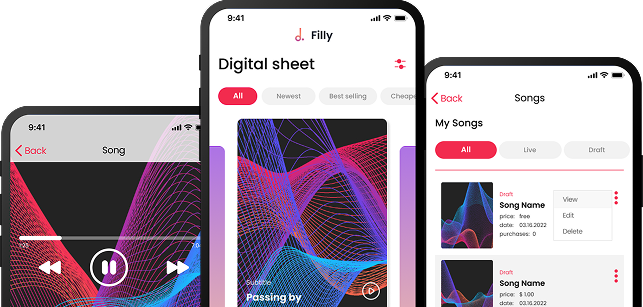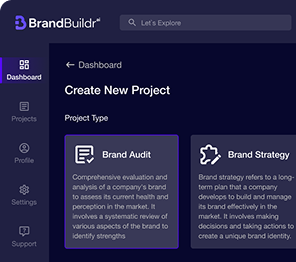In today’s competitive business environment, scalability is a critical component of custom software development. As businesses grow, the software that supports them must adapt to handle increased demand, new features, and greater complexity without compromising performance. Failing to build scalable solutions from the start can lead to costly rewrites, performance bottlenecks, and limitations that stunt business growth.
This article explores the best practices for building scalable custom software solutions, emphasizing the importance of architecture, development methodologies, technology stack choices, and testing strategies that enable long-term flexibility and success.
.avif)
1. Why Scalability Matters in Custom Software Development
Scalability refers to a system’s ability to handle growing amounts of work or to be expanded to accommodate that growth. For custom software, scalability means that as a business grows, the software must seamlessly support an increasing number of users, data volumes, and transactions without degrading performance. This flexibility is crucial for any business expecting growth, especially startups, enterprises, and organizations in dynamic industries.
Benefits of Scalable Software Solutions:
- Cost Efficiency: Scalable software minimizes the need for re-engineering or frequent system overhauls, saving both time and money in the long term.
- Performance Consistency: As demand increases, scalable systems maintain high performance, ensuring a smooth user experience without interruptions.
- Growth Enablement: Scalable systems support business expansion, accommodating more users, transactions, and data with ease.
- Competitive Advantage: By being prepared for future growth, businesses can outpace competitors who may struggle with scaling limitations.

2. Best Practices for Building Scalable Software Solutions
a) Design with Scalability in Mind from the Start
The foundation of scalable custom software begins with the design phase. Before writing a single line of code, it’s important to anticipate the potential growth and demand that the system will need to handle. Scalability should be a core principle in the software architecture and decision-making processes.
Key considerations during design include:
- Modular Architecture: A modular design breaks down the system into independent components that can be scaled individually. This allows for easier maintenance and growth without affecting the entire system.
- Loose Coupling: Loose coupling between different modules or services ensures that changes or failures in one part of the system do not affect others. This is crucial for scalability and reliability.
- Microservices: Instead of building monolithic applications, which are difficult to scale, consider adopting a microservices architecture. Microservices allow individual services to scale independently based on demand, making it easier to manage and expand specific functionalities.
b) Choosing the Right Technology Stack
The choice of technology stack—programming languages, frameworks, databases, and cloud infrastructure—plays a significant role in determining how easily software can scale. Making the right choices at the outset can prevent future headaches when scaling becomes necessary.
Considerations for an optimal technology stack:
- Cloud-based Infrastructure: Cloud platforms like AWS, Microsoft Azure, and Google Cloud offer elasticity, allowing businesses to scale their applications on-demand without investing heavily in physical infrastructure. Cloud-native services also offer auto-scaling features, which automatically adjust resources based on usage.
- NoSQL Databases: Traditional relational databases (SQL) can be difficult to scale, especially when handling massive volumes of data. NoSQL databases like MongoDB or Cassandra are designed for horizontal scaling, enabling businesses to add more servers to accommodate increased data loads.
- Load Balancers: Load balancing ensures that incoming requests are distributed across multiple servers, preventing any single server from becoming a bottleneck. Cloud providers often offer load balancers as part of their infrastructure services.
c) Implementing Horizontal and Vertical Scaling
Scalability in software can be achieved in two primary ways: horizontal and vertical scaling.
- Horizontal Scaling: This involves adding more servers or nodes to distribute the load. Cloud-based infrastructures make horizontal scaling seamless, allowing businesses to spin up additional virtual servers as needed.
- Vertical Scaling: This refers to increasing the capacity of an existing server by adding more CPU, memory, or storage. While vertical scaling can offer a quick fix, it’s limited by hardware constraints, making horizontal scaling the preferred option for long-term growth.

d) Optimize for Performance from the Beginning
As custom software grows in size and complexity, performance can degrade without careful attention to optimization techniques. Developing with performance in mind ensures that the software remains fast and responsive, even as demand increases.
Performance optimization strategies include:
- Caching: Implement caching mechanisms to store frequently accessed data temporarily, reducing the need to repeatedly query the database. Popular caching systems include Redis and Memcached.
- Database Indexing: Use proper database indexing techniques to speed up query performance, especially for large datasets. Poorly indexed databases can become a significant bottleneck as data grows.
- Asynchronous Processing: For tasks that don’t need to be executed in real-time (e.g., sending emails, background data processing), use asynchronous methods to offload work and prevent blocking the main application.
e) Leverage Automation for Scalability
Automation is crucial for scaling operations, especially when managing large-scale custom software deployments. Automation reduces human error, speeds up repetitive tasks, and allows for faster responses to increased demand.
Key areas where automation can enhance scalability:
- CI/CD Pipelines: Continuous integration and continuous delivery (CI/CD) pipelines automate the software development process, from code integration to testing and deployment. This allows development teams to push updates quickly, ensuring that the software scales smoothly with new features and bug fixes.
- Infrastructure as Code (IaC): Tools like Terraform and AWS CloudFormation allow infrastructure to be managed through code, making it easier to replicate, scale, and manage servers, databases, and other resources.
f) Monitor and Scale Proactively
Building scalable software is not a one-time effort—it requires continuous monitoring and proactive scaling strategies. Performance monitoring tools help businesses identify potential bottlenecks and predict when additional resources are needed.
Monitoring and scaling strategies:
- Application Performance Monitoring (APM): Tools like New Relic, Datadog, or Grafana provide real-time insights into the performance of your software, enabling developers to identify slow queries, performance bottlenecks, and system failures.
- Auto-scaling: Modern cloud infrastructure allows for auto-scaling, where the system automatically adjusts the number of resources based on usage. Setting thresholds for auto-scaling ensures that the software can handle sudden traffic spikes without manual intervention.
g) Prioritize Security While Scaling
As custom software scales, security risks can also increase. Ensuring that security measures scale along with the system is essential for maintaining data privacy and protecting against cyber threats.
Key security practices for scalable software:
- Encryption: Ensure that all sensitive data is encrypted both in transit and at rest to prevent unauthorized access.
- Access Control: Implement role-based access control (RBAC) to limit the access of users and developers to critical systems.
- Regular Security Audits: As the software scales, conduct regular security audits to identify vulnerabilities and ensure compliance with industry standards and regulations.
h) Maintain Scalability Through Regular Refactoring
As software evolves, its architecture can become more complex, leading to scalability challenges. Regular refactoring ensures that the codebase remains clean, maintainable, and scalable.
Key benefits of refactoring:
- Simplifying Complex Code: Refactoring eliminates redundancies and simplifies complex code structures, making the system more efficient and easier to scale.
- Improving Performance: Regular performance testing and refactoring ensure that the system can handle growing data loads and user demands without performance degradation.
3. Case Study: Scalable Custom Software for Codebridge
At Codebridge, we have successfully developed scalable custom software solutions for a wide range of industries. One notable example is a fintech platform we built for a startup that was experiencing rapid growth.
The Challenge:
The startup required a financial management platform that could handle thousands of daily transactions, store large amounts of customer data, and integrate with multiple third-party APIs. As their customer base grew, they needed a solution that could scale effortlessly without performance issues or downtime.
Our Solution:
We implemented a microservices architecture, allowing the platform to scale individual services based on demand. We chose AWS for cloud infrastructure, leveraging its auto-scaling features to manage traffic spikes during peak hours. For the database, we used a combination of NoSQL for handling large data volumes and SQL for transaction management, ensuring both scalability and consistency. Finally, we integrated a CI/CD pipeline to automate deployments, ensuring that updates could be made without affecting the platform's performance.
The Result:
The platform was able to scale from handling 10,000 daily transactions to over 100,000 without any significant performance degradation. With our focus on scalability from the outset, the startup was able to grow rapidly without experiencing the technical limitations that could have hindered their success.
Building scalable software is key to future-proofing your business. With the right architecture, technology, and proactive strategies, you can ensure your software grows seamlessly alongside your success.

Conclusion: Building a Scalable Future
Building scalable solutions in custom software development requires a proactive approach, considering everything from architecture design to technology choices and optimization strategies. By prioritizing scalability from the start, businesses can avoid costly system overhauls, improve performance, and position themselves for growth.
For startups and established businesses alike, investing in scalable custom software ensures that they are prepared to meet future demands while maintaining a competitive edge in their industries. Whether you're handling increasing data loads or preparing for rapid growth, following these best practices will set you on the path to building scalable, efficient, and future-proof software solutions.

Heading 1
Heading 2
Heading 3
Heading 4
Heading 5
Heading 6
Lorem ipsum dolor sit amet, consectetur adipiscing elit, sed do eiusmod tempor incididunt ut labore et dolore magna aliqua. Ut enim ad minim veniam, quis nostrud exercitation ullamco laboris nisi ut aliquip ex ea commodo consequat. Duis aute irure dolor in reprehenderit in voluptate velit esse cillum dolore eu fugiat nulla pariatur.
Block quote
Ordered list
- Item 1
- Item 2
- Item 3
Unordered list
- Item A
- Item B
- Item C
Bold text
Emphasis
Superscript
Subscript





















.avif)



.avif)

.avif)


